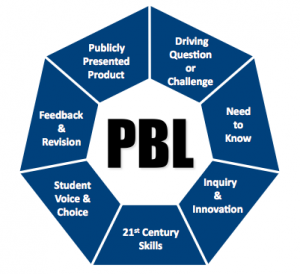Let’s take a peek into the average elementary or secondary school
in Ontario; students are taught lesson plans and then given worksheets to complete
that accompany those lectures. Classes are taught in a kill and drill sort of
format. Teachers are seen as the all-knowing beings who pour their knowledge
into the minds of their students. No matter what the subject or grade, students
are taught strict content taken straight from the formal provincial curriculum
documents. This is how I’ve been taught over the years. It’s what I know. These
traditional methods seemed effective to me; but is that simply because that is
what I am comfortable with? As students, we didn’t know any different because
all of our classes were structured in this way. Current research on student
learning proves that this is indeed not the most effective way to ensure
student growth.
Let’s fast forward a few years to
university. Teacher education classes preach a plethora of theories that we
never actually get the chance to apply. Our professors advocate progressive
constructivist methodologies that seem great in theory. However, none of us truly
knows how to implement these strategies into our classes. One of the biggest
breakthroughs in recent educational theory is the importance on building
curriculum through the interests of the students. This theory doesn't sound like
rocket science but the smallest tweaks in what their learning can leave a large
impact on the intrinsic motivation of your students. Educators around the world
are hopping on board with these methods. There are schools all over that have created
their entire teaching strategy based on the components of Project- and
Problem-Based Learning.
Project/Problem Based learning; what
exactly does this mean & what does it look like when put into practice?
https://www.youtube.com/watch?v=LMCZvGesRz8
Professor Susan Drake defined Problem Based Learning as "a
lesson that starts with a real world problem that is open-ended and ambiguous.
There is more than one solution to these problems and students must gather
information to solve the problem" (Personal Communication, October 29).
Problem and Project based learning have slight differences. Project Based
Learning is built off the creation of a wicked problem, “a problem that is so
complex, ill-structured, ambiguous and interconnected that they are probably
not solvable” (Personal Communication, October 29). Both methods of teaching are
student directed, encouraging collaboration, research, and problem solving; all of which are important 21st Century skills.
Students are assessed, and prove their knowledge and understanding, through a
Rich Performance Assessment Task (RPAT). Pictured below is a diagram depicting
the components of Project Based Learning:

http://plpnetwork.com/2012/10/19/venturing-project-based-learning/
In the article "Enhancing College Students' Life Skills
through Project Based Learning", Wurdinger and Quereshi describe project based learning as
"a teaching method where teachers guide students through a problem solving
process which includes identifying a problem, developing a plan, testing the
plan against reality, and reflecting on the plan while in the process of
designing and completing a project" (2014). This can be applied to any
question that involves research. This type of methodology is most commonly used
in math but can obviously be helpful in other subjects as well. As a future French
as a Second Language teacher, how can I use this type of learning in my
secondary school classrooms to motivate my student’s appreciation and grasp of
the language?
Inquiry Hub is a school located in British Columbia that utilizes
the strategies of a project based learning community as an attempt to keep all
students as engaged and intrinsically motivated in their learning as possible.
Many of the students who attend Inquiry Hub are those who felt out of place, or
did not thrive, in more traditional school settings. With these constructivist
ways of learning in place, many of their students are increasingly more engaged
and effective in their studies. Inquiry Hub created seven key aspects, which
are featured in the photo below, that guide the actions of their staff and
students:

http://www.inquiryhub.org/key-aspects/
Nowadays, we live in a world of rapid expansions in technology. By
integrating technology into the normal routines of the classroom, it encourages
students to research and scaffold their own pathways for learning. Teachers are
there to set up a general concept and guidelines for the lesson, to guide the
learning, but students are expected to create their own projects based on their
passion and interests. Students expand in any direction from the basic
guidelines provided to showcase their understanding and discoveries.
This new story of student driven education is one
that I am going to have to adapt my strategies to include. I know that I can
learn from my students and am curious to see what they wonder about. I want to
provide my students the opportunity to pursue their interests within my subject
domain. Every student has the potential to succeed; now it is my job to set up
my lessons in a way that ensures that they do.
References:
[Buck Institute For Education]. (2010, December 9). Project Based Learning: Explained [Video File]. Retrieved from https://www.youtube.com/watch?v=LMCZvGesRz8
No Author. (2015). Inquiry Hub. Retrieved
from http://www.inquiryhub.org/
Wurdinger, S. & Quereshi, M. (2015). Enhancing College Students' Life Skills Through Project Based Learning. Innovative Higher Education, 40(3). Retrieved from http://journals2.scholarsportal.info.proxy.library.brocku.ca/details/07425627/v40i0003/279_ecslstpbl.xml&janrain=false&linkcolor=0074be